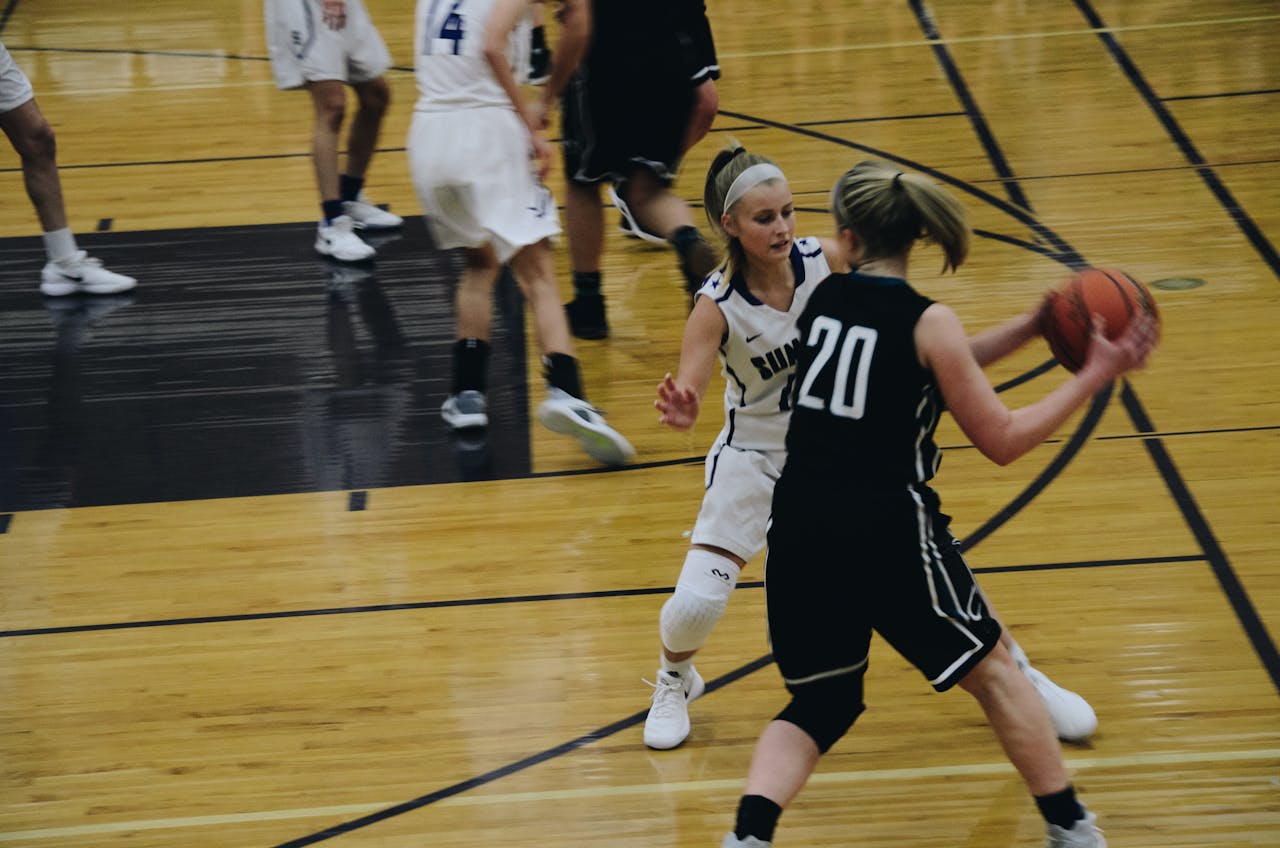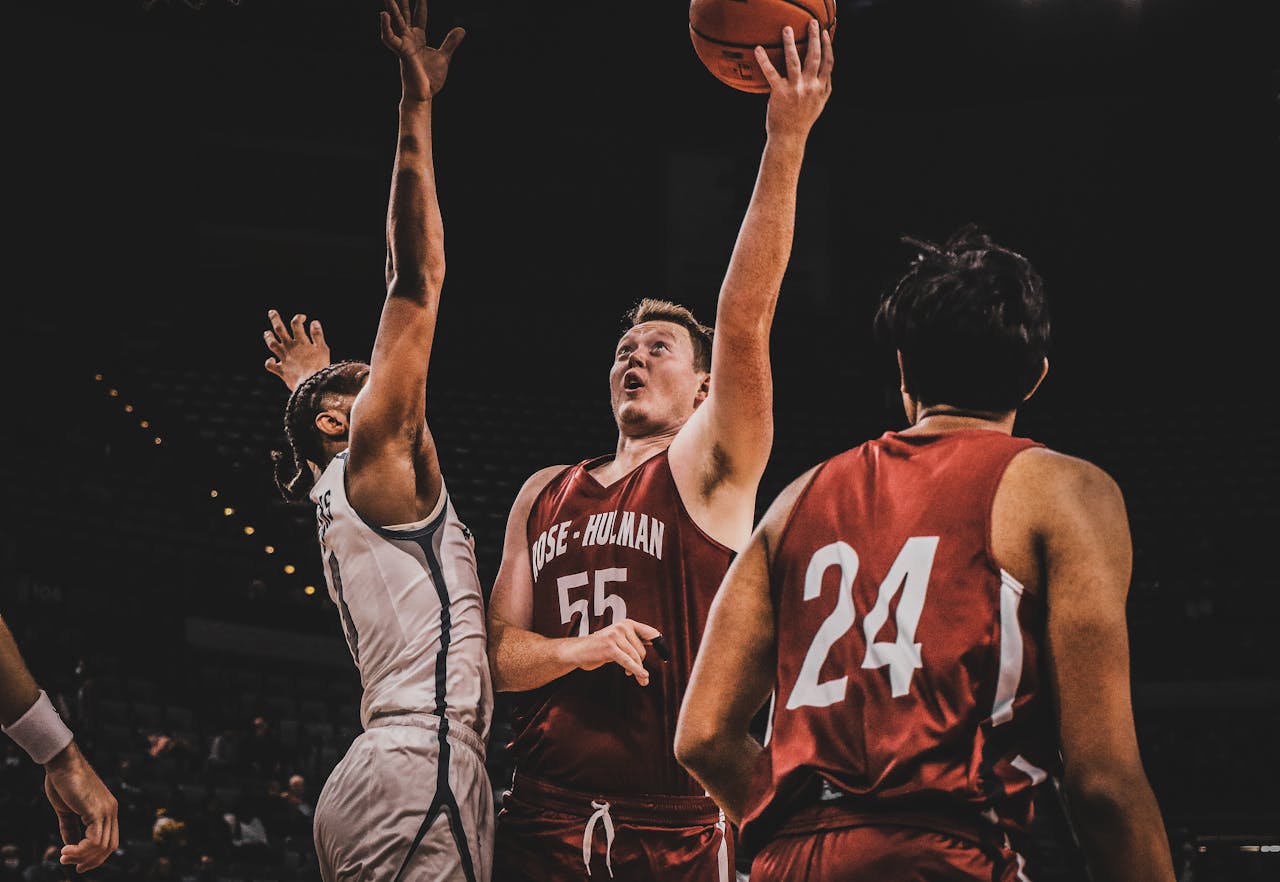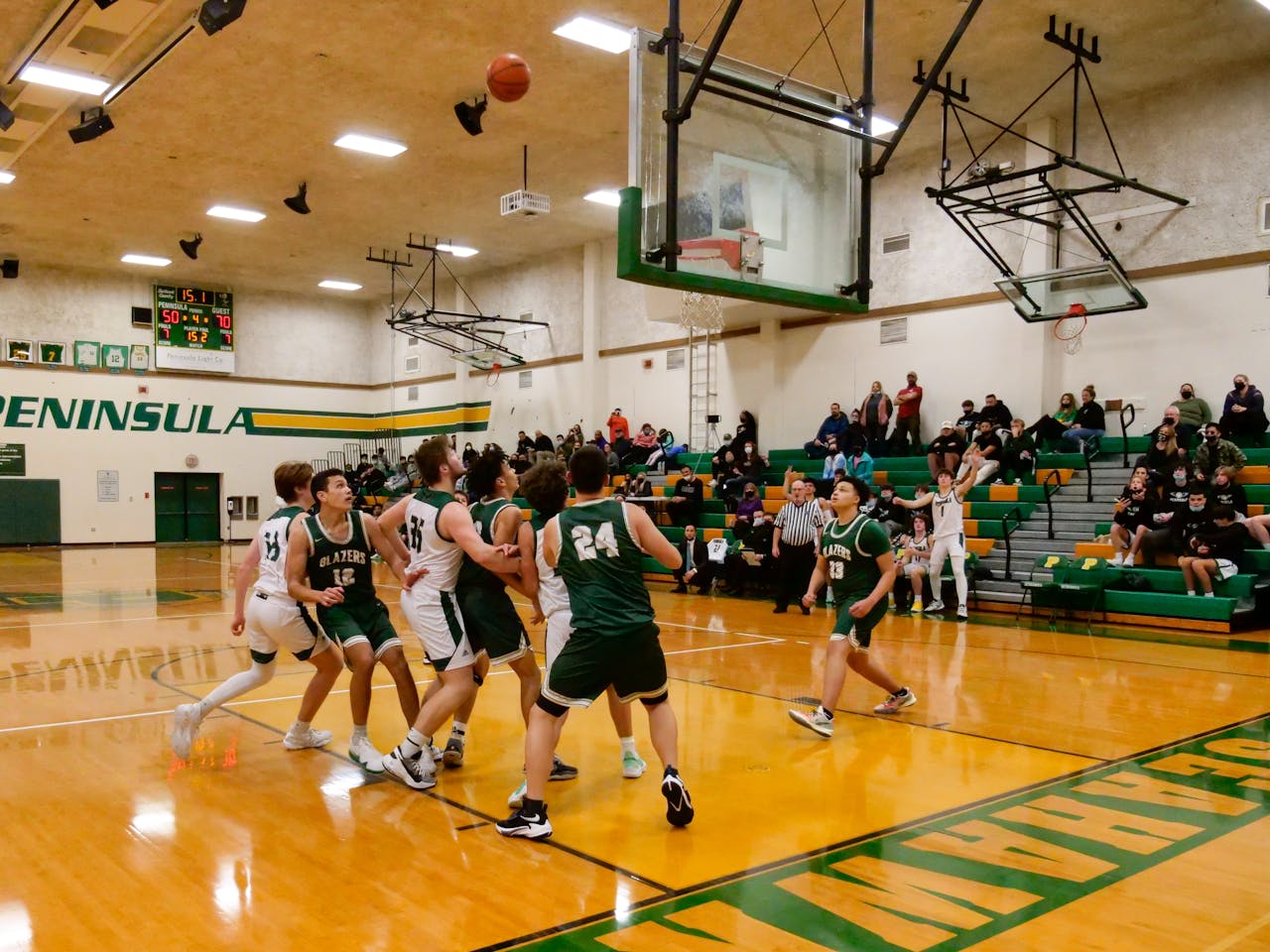“How many quarters are in basketball?” is a basic question that is frequently asked. Because different leagues and formats have distinct rules, the answer varies depending on the kind of basketball being played.
This blog examines basketball quarters, their length, and their effects on games in various competitions, such as high school basketball, the NBA, FIBA, and the NCAA.
Quarters in Basketball: The Basics
Usually, basketball games are broken up into four quarters, each of which represents a different part of the game. The sport has a structure thanks to these quarters, which promote fair play, tempo, and strategic planning. Nevertheless, the league or level of play determines the duration and regulations for these quarters.
- There are four 12-minute quarters in each NBA (National Basketball Association) game, which adds up to 48 minutes of regulation time. Because of its framework, players and teams can play for longer periods of time and have more opportunities to implement intricate strategy. In between quarters, there are brief pauses, such as a 15-minute halftime between the second and third quarters and a 2-minute break between the first and second quarters and the third and fourth quarters.
- Each quarter in a FIBA (International Basketball Federation) game lasts 10 minutes, for a total of 40 minutes of play. The four-quarter format is also used in high school basketball games, however the quarters are usually only eight minutes long.
- College basketball is a little different. Men’s NCAA basketball is split into two 20-minute halves rather than quarters, but women’s NCAA basketball is organized into four 10-minute quarters.
Also Read: How Many Sets Are Played in a Volleyball Game?
The Quarter System In Different Leagues

NBA Quarters
The NBA is renowned for its four 12-minute quarters, which add up to 48 minutes of regulation play. Short breaks occur in between the quarters:
- The first, second, third, and fourth quarters are separated by a 2-minute break.
- a 15-minute intermission between the second and third quarters.
If the game is tied at the end of the fourth quarter, five minutes of overtime are added, and more five-minute overtimes are added as necessary until a winner is declared.
FIBA Quarters
The four-quarter format is also used in FIBA games, albeit the quarters are shorter—just ten minutes long. As a result, 40 minutes is the total amount of time spent in regulation play. Compared to NBA games, FIBA games move a little more quickly because of the shorter quarters.
FIBA game breaks include:
- The interval between quarters is two minutes.
- a halftime break of fifteen minutes.
- Similar to the NBA, FIBA games have five-minute overtime sessions.
NCAA Quarters And Halves
Compared to professional leagues, college basketball games are different:
- Men’s NCAA Basketball: Halftime was 15 minutes, and the game was split into two 20-minute halves rather than quarters. 40 minutes of regulation play make up this format.
- FIBA’s structure was more closely followed by women’s NCAA basketball, which was played in four 10-minute quarters.
In men’s collegiate basketball, the two-half structure is distinct from quarter-based games, encouraging a different flow and strategy.
High School Basketball Quarters
High school basketball normally uses a four-quarter system, with each quarter lasting eight minutes. This amounts to 32 minutes of game time in regulation. However, the precise quarter length varies by area and country.
Breaks in high school sports include:
- A one- to two-minute break between quarters.
- A ten-minute break between the second and third quarters.
- In high school basketball, overtime periods typically last four minutes.
Also Read: Cool Xbox Gamertag Ideas for Every Type of Gamer
Why Are Basketball Games Divided Into Quarters?

Basketball games are separated into quarters to produce a structured and dynamic format that improves the gameplay experience for all players, coaches, and fans. This division offers strategic, logistical, and entertainment benefits to make the game more pleasant and manageable.
Strategic Breaks For Teams
Quarters allow teams to pause and reorganize during a game. Coaches use these intervals to change plans, substitute players, and provide feedback as the game progresses. This framework allows athletes to maintain optimum performance by allowing short breaks between intensive periods of action.
Balanced Pacing
Dividing the game into quarters helps to keep a regular rhythm, ensuring that neither team is overwhelmed by weariness or momentum shifts. The quarter-time breaks let players recuperate physically, lowering the chance of injury and allowing for continued high-level performance throughout the game.
Audience Engagement
Quarters allow natural pauses for fans to absorb activity, watch replays, and enjoy additional entertainment, such as halftime shows. These intervals also allow broadcasters to introduce advertising, which are critical to the commercial success of professional basketball.
Fair Play
The quarter system maintains fairness by giving both teams equal opportunities to compete under similar conditions. Switching sides at halfway ensures that external influences, such as lighting or fan placement, do not unfairly benefit one team.
Time Management
Quarters break the game into digestible time parts, making it simpler to keep track of the clock and adopt time-based strategy like fouling or preserving time at vital moments.
Also Read: NBA 2K15 Euroleague Basketball Teams: The Full List
How Quarters Differ Across Levels Of Play?

NBA (National Basketball Association)
In the NBA, games are divided into four 12-minute quarters, for a total of 48 minutes of regulation play. This longer game length allows for a slower, more deliberate pace in which players can execute complicated strategy and demonstrate their distinct abilities. Each quarter is separated by a 2-minute break, with a 15-minute intermission following the second quarter.
FIBA (International Basketball Federation)
FIBA games are played in four 10-minute quarters, with a total of 40 minutes of regulation time. The shorter quarters encourage a faster tempo than in NBA games. The breaks between quarters last two minutes, with a 15-minute halftime. FIBA’s international regulations reflect the worldwide aspect of its tournaments, emphasizing pace and togetherness.
NCAA (College Basketball)
Men’s collegiate basketball is unique since it does not use quarters. Instead, games are broken into two 20-minute halves that last 40 minutes. However, women’s college basketball adheres to the FIBA format, with four 10-minute quarters. This distinction affects tempo, with men’s games favoring prolonged momentum and women’s games allowing for more frequent strategy changes.
High School Basketball
High school basketball is normally played in four 8-minute quarters, totaling 32 minutes of regulation. This shorter style helps younger players’ stamina and skill development. Halftime is 10 minutes, with 1-2 minutes between quarters.
These differences in quarter length and structure throughout levels of play result in diverse experiences that customize the game to the players’ ability and the audience’s tastes at each level.
Also Read: Does College Basketball Have Quarters?
Overtime Periods
When games are tied at the end of regulation, overtime periods are implemented:
- NBA and FIBA use 5-minute extra sessions until a winner is determined.
- High school often has four-minute extra sessions.
- NCAA allows 5-minute overtime in both men’s and women’s games.
Overtime offers an extra element of excitement, frequently highlighting clutch performances and high-pressure decision-making.
Conclusion
Quarters are an important component of basketball, influencing the game’s structure, tempo and strategy. Most basketball leagues, including the NBA, FIBA, and high school basketball, have four quarters, but the NCAA men’s basketball is an anomaly, with two halves.

